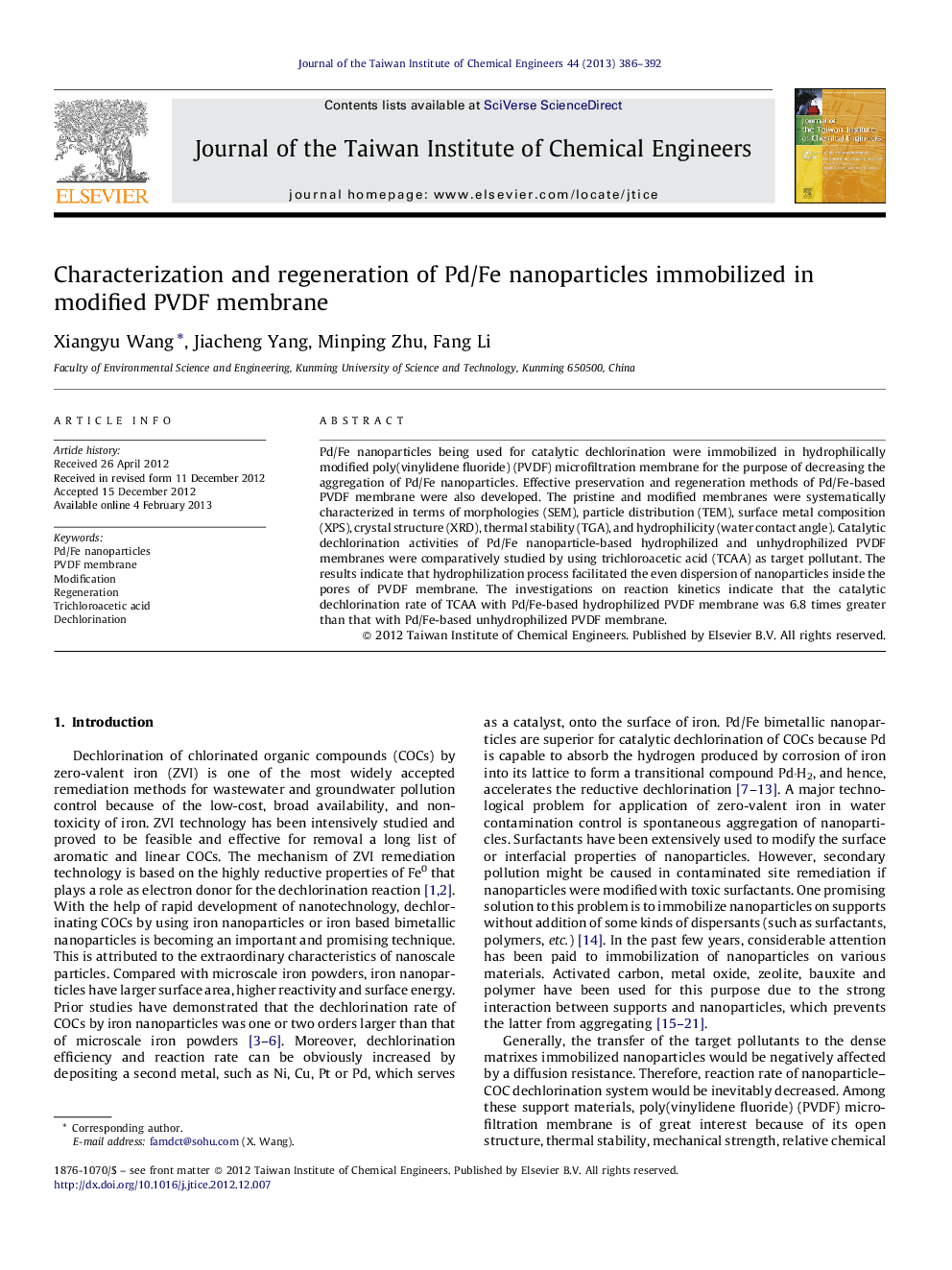| Article ID | Journal | Published Year | Pages | File Type |
|---|---|---|---|---|
| 691114 | Journal of the Taiwan Institute of Chemical Engineers | 2013 | 7 Pages |
Pd/Fe nanoparticles being used for catalytic dechlorination were immobilized in hydrophilically modified poly(vinylidene fluoride) (PVDF) microfiltration membrane for the purpose of decreasing the aggregation of Pd/Fe nanoparticles. Effective preservation and regeneration methods of Pd/Fe-based PVDF membrane were also developed. The pristine and modified membranes were systematically characterized in terms of morphologies (SEM), particle distribution (TEM), surface metal composition (XPS), crystal structure (XRD), thermal stability (TGA), and hydrophilicity (water contact angle). Catalytic dechlorination activities of Pd/Fe nanoparticle-based hydrophilized and unhydrophilized PVDF membranes were comparatively studied by using trichloroacetic acid (TCAA) as target pollutant. The results indicate that hydrophilization process facilitated the even dispersion of nanoparticles inside the pores of PVDF membrane. The investigations on reaction kinetics indicate that the catalytic dechlorination rate of TCAA with Pd/Fe-based hydrophilized PVDF membrane was 6.8 times greater than that with Pd/Fe-based unhydrophilized PVDF membrane.
► Effective method to maintain activity of Pd/Fe-based PVDF membrane was reported. ► Dechorination mechanism of modified Pd/Fe-based PVDF membranes were studied. ► Novel preservation method of Pd/Fe nanoparticle-based PVDF membrane was provided. ► Pd/Fe particles immobilized in PVDF membrane were regenerated after dechlorination.
